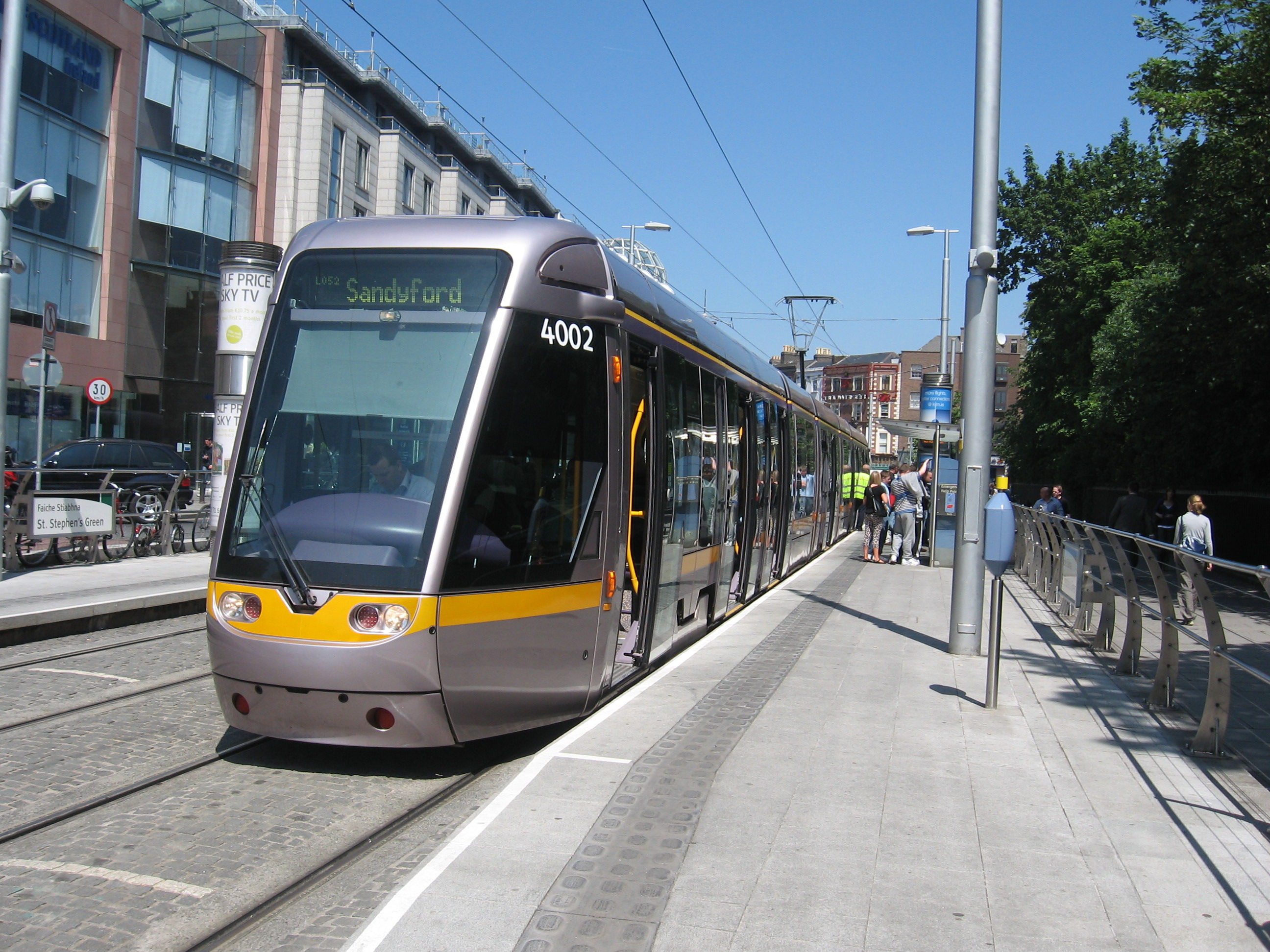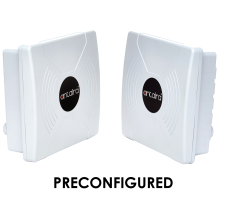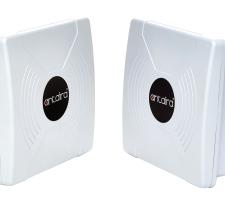
Antaira Technologies’ marketing engineer Brian Roth explains why the increasing capacity of wireless bridges is reducing the cost of expanding and upgrading ITS networks.
With more than half of the world’s population now living in cities, the need for efficient transportation of both people and goods has never been greater and that pressure is unlikely to ease any time soon. Indeed in many regions of the world the rate of urbanisation is still increasing as the demand for rural workers continues to decline. However, updating the infrastructure for the technological and other needs of these modern populations is a major challenge and none more so than the transportation sector. Consistent upgrades have been necessary as cities have grown and intelligent transportation systems (ITS) are increasingly necessary to optimise the capacity of the existing infrastructure – be that road, light rail or even pedestrians.
Individually the ITS installations achieve their local goals but greater gains can be achieved by linking installations together to enable systems to cover wider areas. The comprehensive interconnection of different parts of the system, such as sensors, traffic controllers, variable message signs (VMS) and cameras, improves the efficiency of the staff at the traffic management centre (TMC). In an entirely new piece of infrastructure this can be done using hard-wired or optical cables, but getting this type of connectivity with existing systems – particularly in older cities – can be problematic. What is becoming more common is installing a scalable Ethernet network infrastructure.
Just like a well working reliable car requires periodic services and upgrades, the transportation infrastructure benefits from maintenance and upgrades. A scalable ITS Ethernet network creates a more efficient TMC. When a city wants to expand and extend its ITS network one of the greatest hurdles to overcome is the city itself. In older cities this will often require construction work to install or expand upon the existing Ethernet or fibre optic communication network. Not only is this time-consuming and expensive, it can also create delays for traffic during the construction phase.
Wireless technology conforming to IEEE 802.11 is one of the most efficient ways of overcoming the previously stated challenges and offers flexible solutions to upgrading a city’s infrastructure in place of hard-wiring. Indeed, an IEEE 802.11 wireless radio can be used to link a smaller, new, network of devices to the main network through a single wireless connection.
Continued advancements made to the IEEE 802.11 wireless communication standard, include the introduction of IEEE 802.11n for increased throughput and longer communication distances with unique and uncrowded frequencies. And while the number of devices on these particular frequencies increase, wireless security has also been greatly enhanced with the introduction of IEEE 802.11i and 802.1x which use WPA2 authentication.
While 802.11 wireless communications can be utilised in many situations, the installer has to be aware of the environment in which the equipment will be deployed to prevent unexpected circumstances. For optimum performance there should be a clear line of sight between both of the end units then, in ideal circumstances, the theoretical range is up to 3.2km (2 miles). Objects such as thick steel buildings, rock formations and trees will reduce the efficiency of the transmissions. The transmission rate will change depending on distance, interference and how much information is being sent and the number of devices connected. There can also be problems with electromagnetic interference such as power substations or high-power lines which will also reduce the overall performance of the IEEE 802.11 wireless. In both cases integral data error checks ensure that the data is complete and has not become corrupt.
The 802.11 wireless standards offer a range of configuration options such as access point, client, bridge and repeater mode allowing for versatility. For example, from a security standpoint, an 802.11 wireless bridge will create a more secure point-to-point link between two units than a typical access point/client application where anyone can attempt to connect and log in if they have the correct password. In a bridge application the only allowable wireless connection is between the paired units and other wireless devices cannot log on. Think of it as being more akin to an invisible wire rather than a wireless signal that prevents unintended users from accessing the network.
Another aspect of the twinned bridging units’ security is that they only accept wireless connections from one direction. So in instances where multiple 802.11 wireless devices from different directions need to be conveyed to/from the TMC, a normal access point can be used to gather the various data streams into a single communication which can then be transmitted over the wireless bridge.
If line of sight is not possible or if the run becomes too long, repeaters can be used to extend the range and/or get around obstacles although this is not without losses. While there is 100% communication between the first two units, each subsequent repeater will have the bandwidth – so between units two to three the bandwidth is halved and that is halved again between units three and four.
Wireless technology can also reduce the cost of installing or expanding emergency vehicle prioritisation systems (EVP) which turns traffic lights green in front of ambulances or other emergency vehicles. This can cut up to 30 seconds off the time taken to get through each signalised intersection and reduce the number of accidents between motorists and emergency response vehicles (see page 64). While such results may be desirable, if the intersection has not been networked it cannot be EVP enabled because the signal needs to receive a command from either the emergency vehicle dispatcher or the TMC.
There are a couple of reasons why a traffic intersection may not be networked, the first of which is a physical restriction, such as a bridge, that would be challenging and costly to cut and install network cables. Another is that the distance between traffic signals can easily exceed Ethernet’s 100m capability and optical fibre cabling has to be installed underground, making it expensive. In such instances an IEEE 802.11 wireless bridge can be used to link the network from an EVP capable intersection to one without a network connection (although the EVP equipment will also have to be installed on the intersection lights.
Another instance might be a light rail system where the depot has a pre-existing network infrastructure such as serial, Ethernet or fibre. In order to install CCTV surveillance cameras along the route and on the platforms new cameras will need to be installed and connected to the network. If traditional wiring is used there will be at least two limitations to traditional wiring: the inherent distance limitation of Ethernet cable (100m) and obstacles for the cable being run to the cameras.
Inevitably the cable will need to be hidden from the public, located either in the floor or walls, which will require cutting or drilling. In such instances a wireless installation can bring the CCTV signal back to the TMC without having to shut down the platform to install the cable and while it is not included in the 802.11 standard, many devices are now moving to power over Ethernet (PoE) meaning that there may be no need to even run a power cable to these devices. Until now installers have had to individually configure each pair of IEEE 802.11 wireless devices following installation. To speed this process some wireless units, such as
For any IEEE 802.11 wireless network to function correctly it is essential to select the correct radios with appropriate antennas and ensure the correct cables are used between the radios and antennas. The mounting requirements for all the components must also be verified. Wireless radios typically require the user to configure the device and implement any additional features that might be required, although some, such as Antaira’s APX-120N5, come as a preconfigured bridge. In these, settings such as the IP address, SSID and WPA2 security have already been set up so the user only needs to connect power to the devices and the units will automatically link up ready to pass data. There are management capabilities if users need to adjust some of the settings.
The APX-120N5 uses PoE to power the device and is capable of being powered from either 24v PoE or the standard 48v PoE.However that does not extend to powering the CCTV cameras or other devices connected to it for image/data transmission purposes.
With an 800mW radio the wireless bridge is able to support long range high speed communication at up to 150Mbps. The 5GHz 19dBi dual-polarisation antenna is built-in to the sealed (IP67) units which can operate in the temperature range of -20°C to 70°C. Optional security features include hidden SSID, MAC address filtering, WEP (Wired Equivalent Privacy) in 64- and 128-bit as well as IEEE 802.11i and 802.1x security authentication.
So with the advent of the wireless bridge, projects previously considered too difficult or too costly may now be viable.















